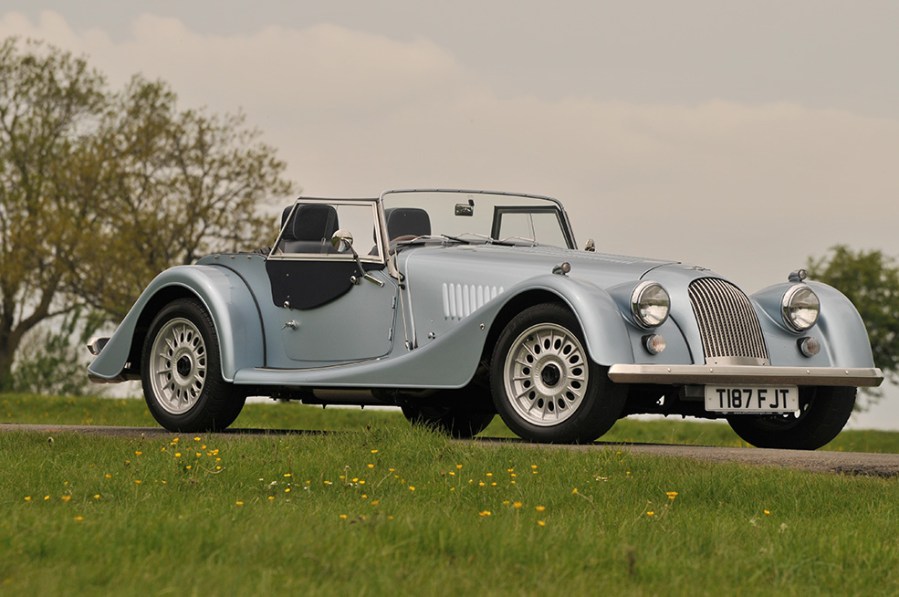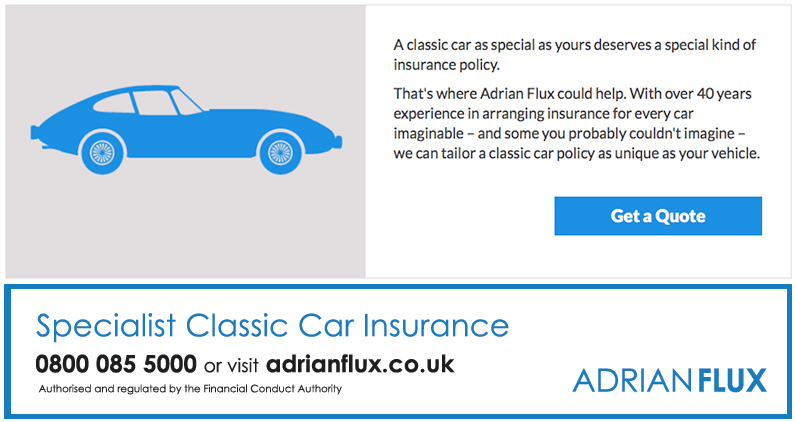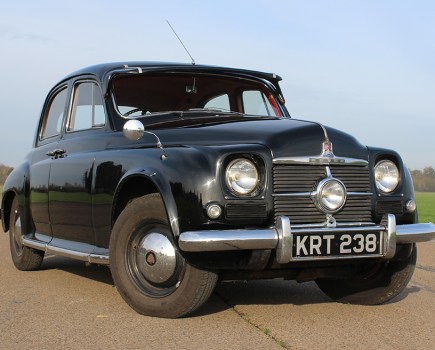Summer’s has arrived, the sun’s shining and it’s time to drop the roof and take to the open road in one of the best 10 classic convertibles for over £10k!
1. Morgan Plus 8
If you have an open top car, you’ll need the appropriate soundtrack to go with it – and in this respect, the Plus 8 is likely to prove a chart-topper. The wonderfully antiquated V8 Morgan first appeared in 1968, using Rover’s Buick-derived powerplant and featured a host of chassis and drivetrain modifications to cope with the extra power and torque, including a limited slip differential. By the 1980s, Rover’s SD1 V8 was employed; it’s simple and strong, but cooling has always been marginal so beware blown head gaskets and inspect the somewhat feeble radiator for leaks. Quizzing the owner as to what antifreeze concentration has been used will determine the engine’s long-term prognosis.
Early V8s (with 161bhp) featured twin SU HS6 carbs, with a switch being made to Strombergs in 1981. Bosch fuel injection appeared in 1983 as an option, but was made standard from 1986 and this transformed the big-engined Morgan, making it smoother and more economical. Usefully, power was up to 190bhp, so it was faster too.
The ash frames on cars made after ’86 were treated with Cuprinol so were less likely to rot. Ditto the chassis from this date, which was powder coated rather than just being painted. Ideally though, you’ll want one that’s been totally restored which might mean spending as much as £35,000. It will be worth it though.
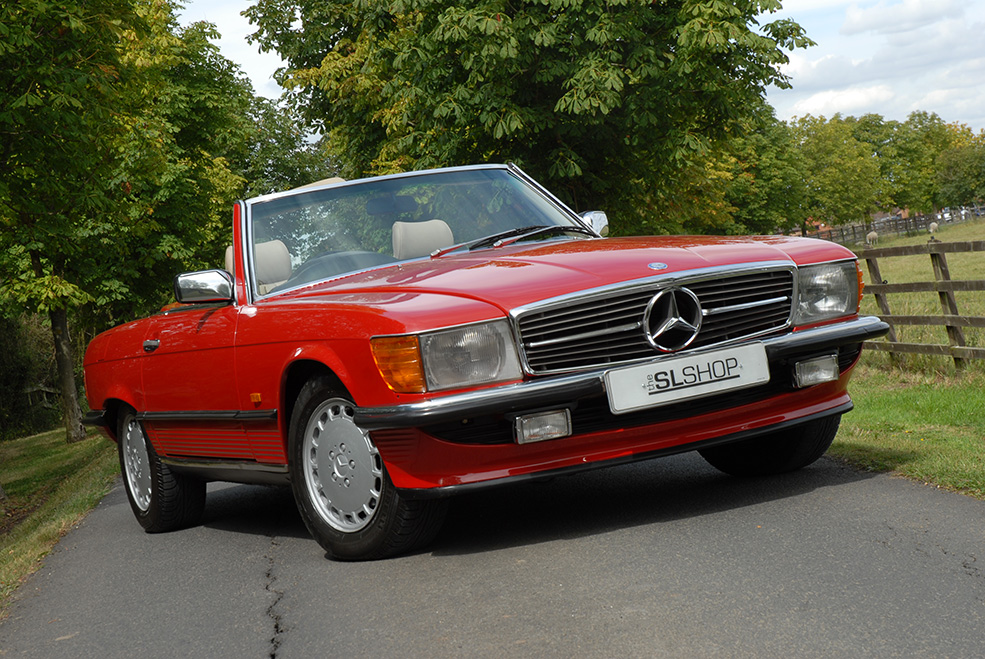
2. Mercedes W107 SL
For a chunk of real seventies nostalgia, why not consider the long running Mercedes W107 SL? Which engine you choose is largely down to personal choice. Early V8s were 3.5-litre, with the rapid 4.5-litre V8 arriving in 1972, the latter being superseded by the 5.0-litre V8 in 1980 followed by the 5.6 V8 in 1985. The sixes arrived for the 1975 model year with the 280 and the 3.0-litre broke cover in 1985. In reality the 300SL won’t feel very much slower than the 500SL V8; it’s a car you drive rather than a car that drives you and while being significantly more gutsy than the 280, it won’t incur nearly the same running costs as the V8s. What’s more, you might be able to find one with a manual ‘box which will instantly make for more spirited driving.
Although there are quite a few roofless SLs lurking in the classifieds, it’s crucial not to buy the wrong one. By that we mean one that’s missed out on basic servicing or an example where rust has already got a foothold in the wheelarches, rear valances, door bottoms bulkhead and scuttle area, the latter two of which are notoriously tricky to repair. Also take time to carry out a proper inspection of the inner wings, subframes and suspension mounting points which are all prone to corrosion.
The budget buy will be the 280, and these sell for under £10,000. However, the more worthwhile 300SL and V8s will be in the mid-teens.

3. Morris Minor
The Moggy needs no introduction, but suffice to say all the charm of the saloon is magnified twofold with the convertible version. And so, for that matter, are values.
Putting right a poor Minor will soon get expensive, so determining the integrity of the bodyshell will be paramount because the engine, running gear and interior can be sorted as time and funds allow. So make the first thing you do when viewing a convertible for sale opening and closing the doors to check for fouling which points to rot in the A-pillars or worse. Oh, and be sure what you are buying is a genuine convertible. Converted saloons are fine, but you should be paying 10-15 per cent less.
The great thing with this car is that being so DIY friendly you can do virtually everything on your driveway, and because spares are so cheap and easily available, fettling will prove fun and affordable. As for price, a nicely restored convertible Moggy will be £12,000 while those with photographic evidence of everything that’s been done may well be closer to £15,000-£18,000.
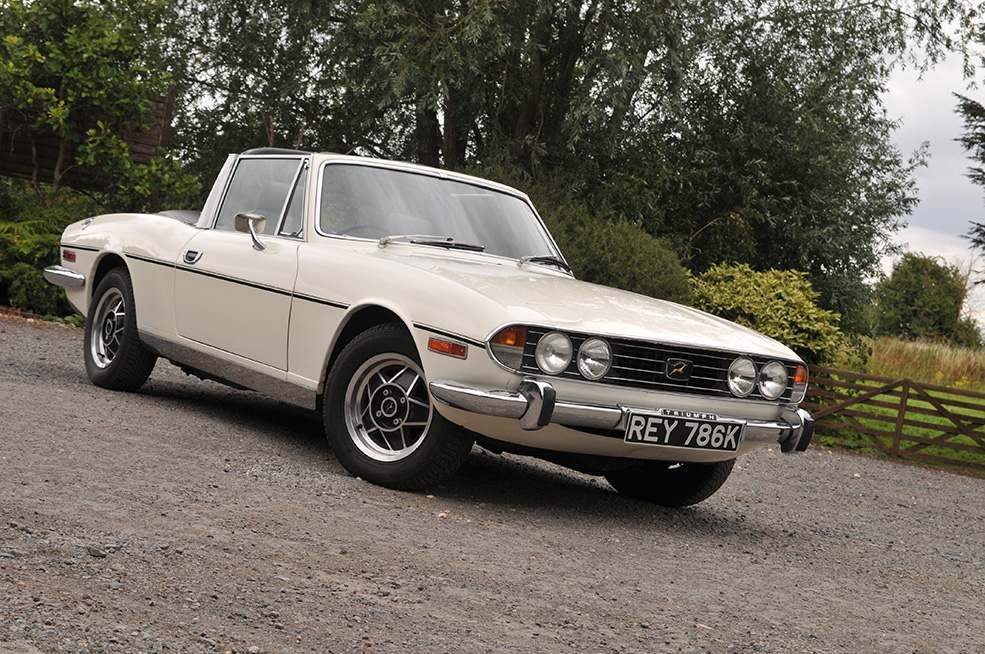
4. Triumph Stag
Rather than being a full convertible, the Stag’s quite clever because its B-pillar roll bar allows it to become a hard or soft top, offering the best of both worlds. Besides that, you will want one because it’s just such a rewarding car to own; performance from its V8 is more than adequate, and it’s supremely comfortable for those long weekend getaways. What’s more, the parts situation is good as is club and specialist support, so maintenance will be an absolute doddle.
Despite being relatively rot resistant compared to other ‘70s classics, hence its high survival rate, there’s still scope for being caught out – although there will be little in the way of surprises for specialists. Try to get the car up on a lift so you can check the internal crossmember which supports the diff; it’s impossible to see otherwise. Beyond the usual checks, judge the quality of a restoration by the evenness of the Stag’s panel gaps.
All sporty Triumphs have enjoyed an explosion in interest in the last few years, so there’s no such thing as a ‘cheap’ Stag. That said, we still think it looks good value alongside the TR5/6. If you want more of a ‘finished’ project that’s been in the hands of a knowledgeable owner who’s addressed all of the Stag’s known niggles, then expect to pay £12,000-£15,000 with the best cars now just topping the £20k mark.
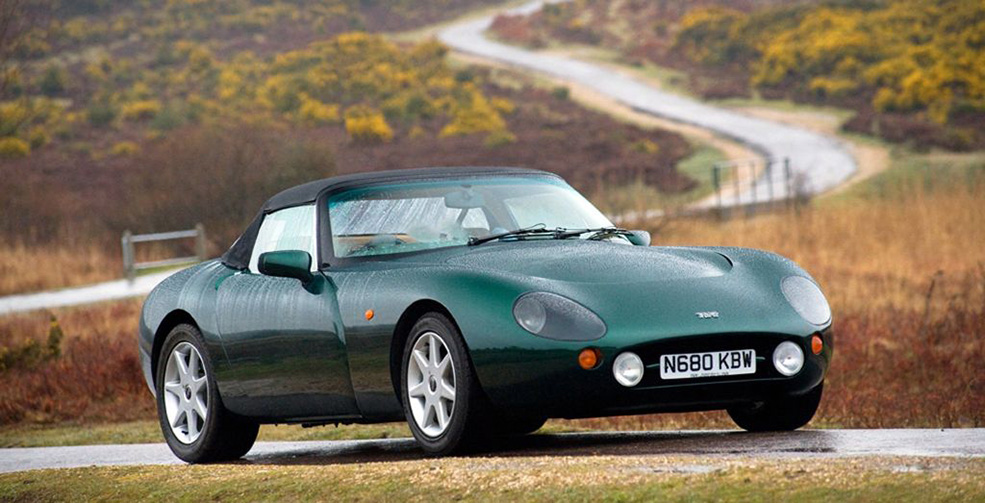
5. TVR Griffith
The brutish ‘Griff ‘ was TVR’s first attempt at making a modern road-going race car, and as the years pass the ageing bar room bruiser is looking more fight fit than ever. Unlike the Chimera, it’s a car that demands total sacrifice in terms of practicality, comfort and fuel bills. However, for those willing to turn their back on sensibility, the rewards are plentiful. Not least the fact that even the 4.0 will crack 0-60mph in under five seconds. It looks nice, too, with its gently sloping nosecone and neat, rounded rump – all of which go to remind you that this is a car built in the days before big frills and fancy, over fussy swathe lines. It’s a simple, classic design that still attracts attention wherever it goes.
The Griff was produced from 1990 until 2002, so there’s lots around. The only real ghoul when buying is the prospect of getting one with a rusty steel tubular chassis, although specialists can lift the body and just do the outriggers if necessary. As for price, decent 4.0 and 4.3s will begin at £12,000 with nice ones with lots of history likely to change hands for £15,000. The coveted 500 will set you back at least £20,000, while the very best ones might be as much as £25,000-£30,000.

6. Triumph TR6
Hirsute, seat of pants open-air motoring doesn’t come any more involving than in a brick-shaped TR6. Ironically, it was a car that was overlooked in favour of its prettier predecessors for decades, but has found enormous favour in recent years. In fact, the fifty-somethings can’t get enough of them now – and this has impacted big time on values. But don’t let the recent price rise put you off because the brutish Triumph is still a great car to buy, not least because there’s just so much you can do in the way of upgrades to put your own personal stamp on it.
The key, of course, will be starting off with a good, solid car so avoid the rot boxes and ones that have undergone a budget restoration a long time ago. Beware, these cars rot just about everywhere – including the chassis. And be mindful of crankshaft end float because engine rebuilds start at £3,500.
Despite rocketing values, £12,000-£15,000 should still be enough to buy you a nice TR6, with the very best ones exceeding £25,000. Oh, and don’t rule out a less rusty US import; one with a decent set of carbs can be just as quick as a fuel-injected UK model. That said, imports don’t offer quite the same excellent investment prospect.
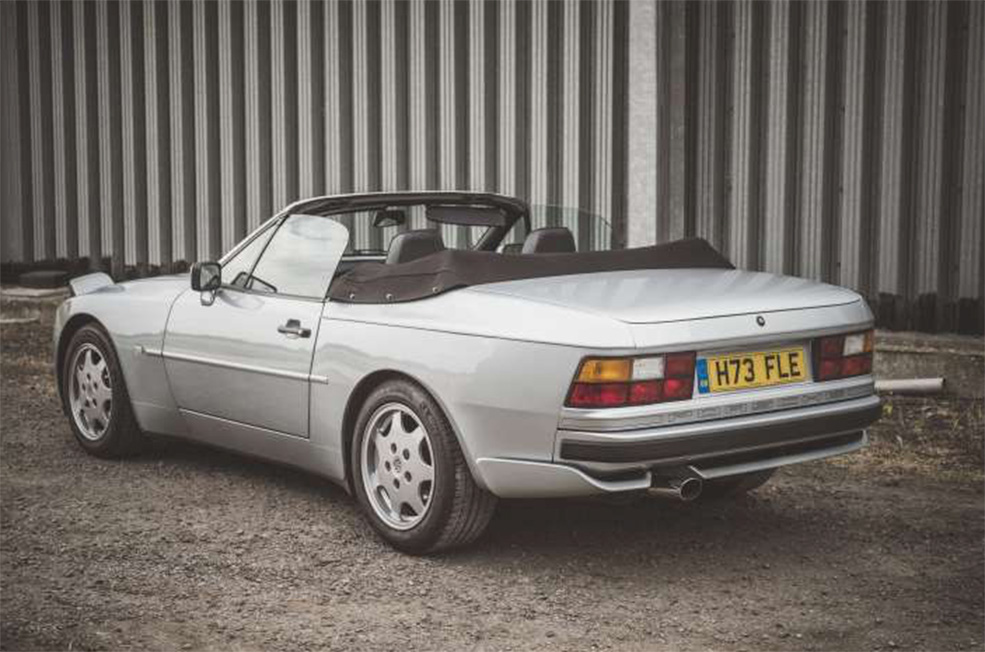
7. Porsche 944
Like other front-engined Porsches, the 944 has always been woefully underrated. However, because the gearbox is at the back, weight distribution is near perfect, and a taut suspension set up means it hugs corners and drives like a treat on fast, twisty A-roads. It’s quick, too, and its normally-aspirated 211bhp 3.0-litre allows it to romp to 60 in a little over six seconds. The elegant convertible version appeared in 1989 in S2 guise, so it already had the reprofiled front end from the 944 Turbo, making it look a lot more modern than its slightly messy looking separate bumper predecessor. It had the neater, oval-shaped dash and adjustable steering column, too.
On the whole, 944 powerplants are robust and generally underworked so serious problems are rare. If it has been allowed to overheat, however, it can blow the head gasket so look out for water/oil contamination. Often, overheating can result from a failed oil/coolant heat exchanger which allows it to leak oil into the coolant and when this happens you’ll notice sludge in the header tank. Being all-aluminium, engines don’t respond well to infrequent use either. Meanwhile, the hood should be a good fit – although there’s only a plastic rear window, so check it for cracks or crazing.
Not long ago £10,000 would have been enough to buy one of these desirable soft tops. However, the knock on effect of 911 price increases has filtered down to the 944, so you might need to splash out £12,000-£15,000 on a nice one.

8. Jensen Interceptor
The classy Interceptor with its exotic Italian styling, plush gentlemen’s club-like interior and massive engine works perfectly in convertible guise. It was offered roof-less for just two years, from 1974 until production came to a close in 1976. By that time it was known as the MkIII Series IV and featured a torquey 440ci V8 with a single, four-barrel carb and most of the early issues had been ironed out. In short, it was probably one of the best Interceptors made.
Buying a hand-built prestige car like this isn’t for the ill informed or feint hearted – so rather than tell you what to look for it’s a case of employing the services of a known Jensen specialist to assess a car for you. There’s plenty of them. The essential thing all along is to be totally realistic, not just regarding the cost of doing things properly (an interior refurb alone using the correct leather might be as much as £10,000), but also regarding running costs. Mid-teens MPG is about as good as it gets, so if your dream is a top-down Continental trip this summer, forget it.
You might also be a little alarmed at the price because £70,000 is the starting price for a nice convertible.
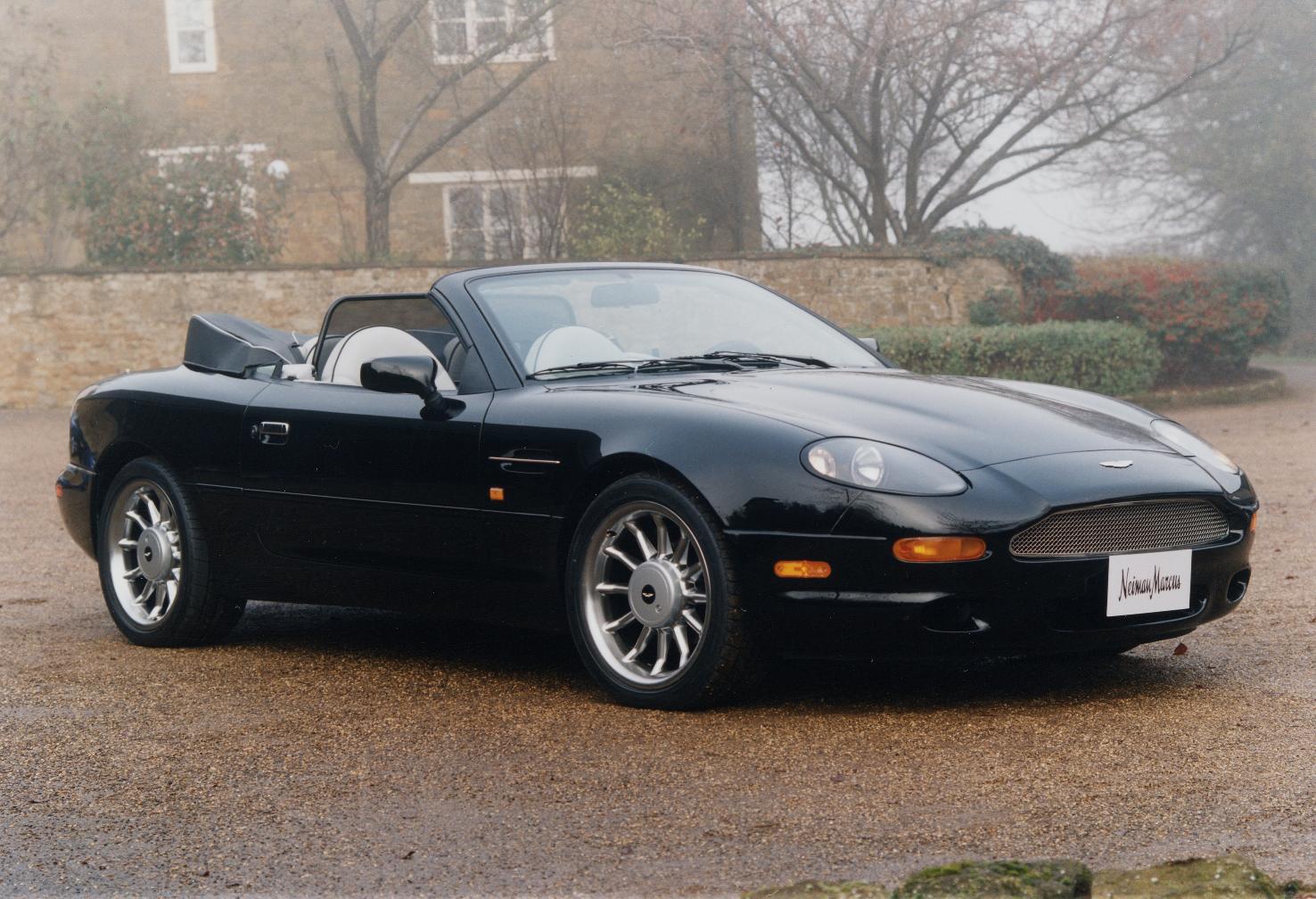
9. Aston Martin DB7
Like all the very best designs, the DB7 coupé was understated, almost subtle in execution. And that applies equally to the chic and highly desirable, open top Volante. Launched in 1996, the first convertibles had the 335bhp supercharged 3.2-litre unit, mated to either a Getrag five-speed manual or GM four-speed auto transmission. It was quick, with 60mph being reached in just under six seconds – and for such as sizeable car, it handled well too. In 1999 the 420bhp 5.9-litre Cosworth-derived V12 Vantage replaced the 3.2-litre, slashing 0-60mph to around five seconds. However, the lure of the V12 was less to do with statistics and more about power delivery throughout the rev range which became relentless and immense.
So how much will you need to pay for such a prestigious open top Aston? Well, £30,000 might just be enough to get the 3.2 and upwards of £40,000 will be needed for the V12 Vantage. Buying, however, is best done with an expert on board to avoid the money pits. And check everything carefully because it’s possible for the hood irons to chafe and break through the fabric. The quarter panels around the rear window fold inwards as the hood is lowered and the crease lines can eventually crack, too. Meanwhile, excessive wind noise will point to window sealing issues, so factor this in too as nothing’s likely to be a cheap fix.
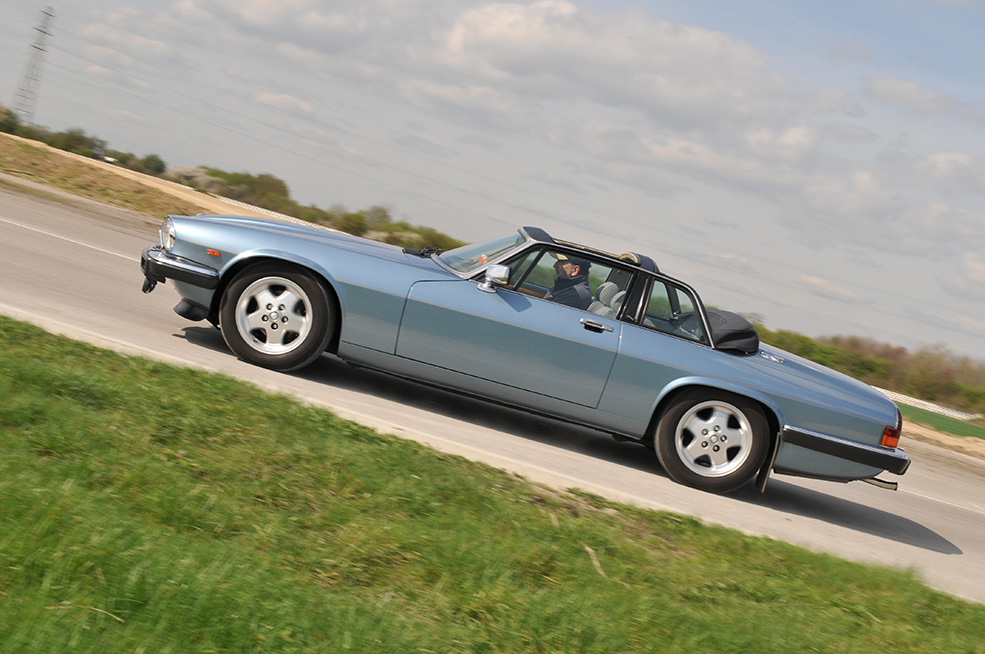
10. Jaguar XJS 3.6
Launched in full convertible guise in 1988 and remaining in production right through until the mid-‘90s, the sleek and now hugely sought after open top XJ-S is a delightful car to own and enjoy. The starting point will be a six-cylinder 3.6, and these can be had for around £10,000.
Body condition will influence your buying decision but it’s the corrosion you can’t see, like the front subframes, that you need to be wary of, so it might pay to seek expert advice from one of the many Jaguar specialists before parting with your money. The 3.6 also suffered head gasket issues, so look for the telltale signs while viewing a car. The 5.3 V12 is a different beast altogether; it offers seamless power delivery, but can be a bit of a labour of love to maintain.
The best bet then, and where we would undoubtedly spend our money, would be on one of the ’94-on 4.0-litre models. That AJ16 engine is bulletproof, silky smooth and offers the same performance as the earlier V12 but with better economy. If you spend £18,000 on a really nice one, we’re sure you won’t regret it.

